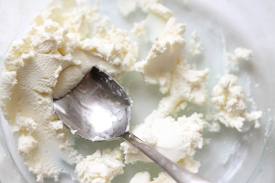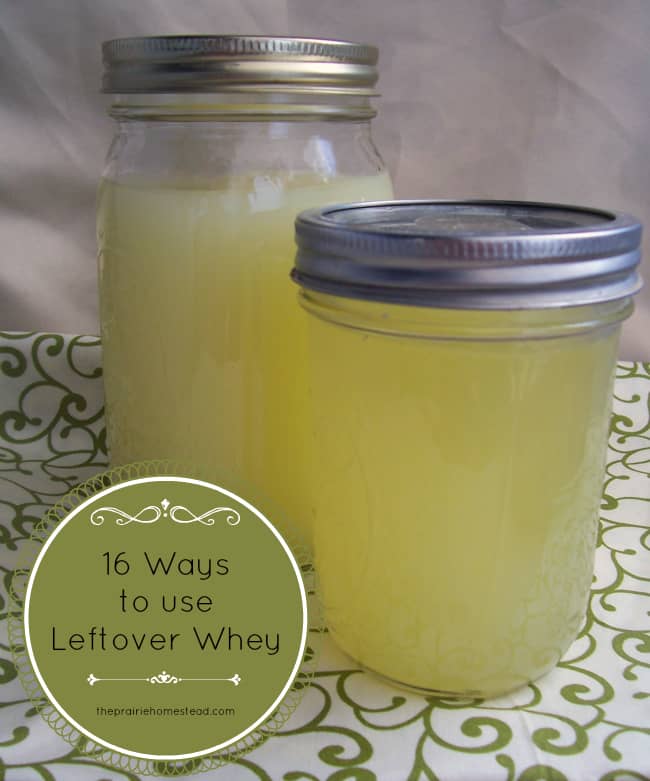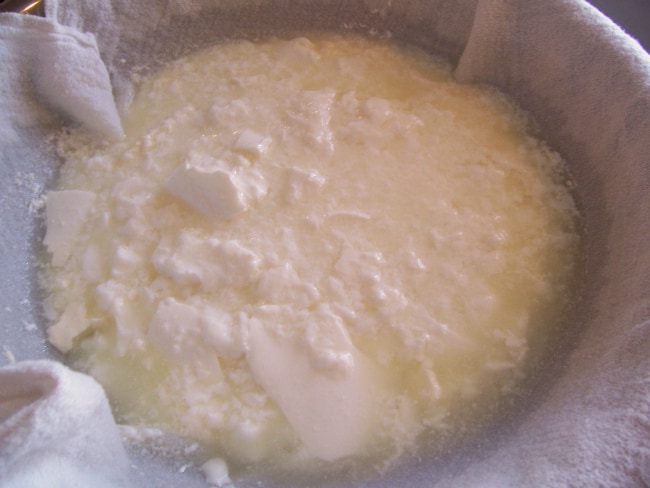Goat Chevre Cheese

Now that my Chevre is made I’m adding herbs to it to make it more tasty. I wondered what to do with the left over sweet whey from the cheese. Make Ricotta! Another great cheese thats great served many ways. I found this article from The Prairie Homestead; Jill. Her site is fantastic and I’m sure you’ll find this information helpful too! Come try a free sample of Herb Chevre or Plain Chevre paired with my blueberry mustard tomorrow at the Manor Farmer’s Market from 4-7pm.
http://www.theprairiehomestead.com/2011/06/16-ways-to-use-your-whey.html
Remember the nursery rhyme about little Miss Muffet eating her curds and whey?
Back before I began my real food journey, I didn’t even know what whey was… Never would I have thought that I would ever become so familiar with it!
Whey is the cloudy, yellowish liquid that is leftover after milk is curdled. It’s packed full of protein, vitamins, minerals, and enzymes.
There are two kinds of whey that you will encounter in your home dairying adventures:
1. Acid Whey- the whey resulting from cheese in which an acid has been adding to aid in the curdling process. (Some types of mozzarella or farmer’s cheese).
2. Sweet Whey– the whey resulting from cheese that is cultured or curdled with rennet instead of additional acid. (Yogurt whey fits in this category, as does soft cheese whey and traditional mozzarella.)
If you’ve ever made cheese, no doubt you’ve been amazed (and maybe even overwhelmed…) by how much whey is leftover after the process. It takes a lot of milk to make a little cheese! But, before you pour it down the drain, WAIT!
There are many things that whey can be used for in your whole food household.
(Please note: real whey is not the same as the powdered “whey” sold in health food stores. They are not interchangeable. )
I’ve compiled a list of ideas that to help you to use up this nourishing byproduct.
I prefer using sweet whey in most of these cases. Be careful when adding the acid whey to things like smoothies, etc, as it might really change the taste of things!
(Some of these ideas require the whey to be heated, so if you are interested in keeping all the qualities and enzymes of the raw whey, just skip those.)
16 Ways to Use Your Whey:
1. Substitute it in any baking recipe that calls for water (or even milk). I love making fresh breads and rolls with my leftover whey. Also try it in cornbread, pancakes, waffles, muffins, biscuits, homemade tortillas, and more!
2. Use it to lacto-ferment vegetables, condiments, sauerkraut, chutneys, jams, etc. This is an area that I have yet to really explore, but it’s on my list! This is an incredibly healthful form of preservation that increases the nutritional value of so many things. Check out the book Nourishing Traditions for more info on this topic. (It is important to use raw whey when you lacto-ferment– not acid whey or cooked whey.)
3. Use it to soak grains, Nourishing Traditions style. Depending on your recipe, several tablespoons or more can be added to your grain and legume preparations to make them more digestible.
4. Freeze it for later. If you anticipate a milk-less time of year (perhaps when your animals are dried up), you can easily freeze whey for future use. Try putting it in ice cube trays or small cups to make the proper portion sizes. Then pop out the frozen cubes and store in a baggie.
5. Use it to cook your pastas, potatoes, oatmeal, or rice. Boiling the whey will cause it to lose its raw properties. However, if you feel like you are drowning in whey, this is a wonderful way to use it up and add extra flavor to the foods.
6. Add it to soups and stews. Perhaps it could take the place of some of your homemade stock or broth?
7. Add it to homemade fruit smoothies or milkshakes. The sky is the limit when it comes to all the flavor combos you can make.
8. Use it as a hair product. Now, I personally have not yet tried this, so proceed with caution! But I have seen several sources recommend it as a shampoo substitute, hair rinse, or even as hair gel! Not sure if I’ll be trying this, but let me know if YOU do!
9. Feed it to the dogs. Our dogs love it when I pour a little whey on their dry food and make it into a cereal. It’s quite the treat.
10. Make Whey Lemonade. I’ve seen several delicious-sounding recipes for lemonade-type drinks using whey. It’s on my list of things to try this summer! Check out this recipe from Food Renegade.
11. Use it to water your plants. Dilute it with a good amount of water (straight whey will “burn” your plants- I learned this the hard way…) and pour on your veggies or flowers (avoid using acid whey here). Think how much your container garden would love that!
12. Feed it to the farm critters. Our chickens love it and so did our pigs.
13. Make ricotta. Ricotta cheese is traditionally made from whey. And it’s so incredibly easy! However, this will require the whey to be heated to 200 degrees, so all the raw enzymes will be lost. Fias Co Farms has an excellent ricotta tutorial. I like to make ricotta when I have gallons of extra whey, and then I freeze it for making lasagna later.
14. Pour it in your compost bin. I have yet to do this, but it would be better than dumping it down the drain.
15. Make a marinade. Add your favorite spices and seasonings (garlic, salt, pepper, maybe some rosemary…Yum!) to the whey and allow it to marinate your steaks, chicken, fish, or pork chops. The enzymes in the whey help to break down the meat and add flavor.
16. Use it to stretch your mozzarella. If you’ve ever made mozzarella before, you know that you must stretch the curds at the end of the process. Some recipes say to use the microwave (no thanks!), while others use a pot of hot, salted water. The last several times, I’ve used hot, salted whey to heat my curds before stretching. It has worked great! Check out my mozzarella tutorial here.
Now surely I didn’t cover every single way to use whey… What are some of YOUR whey tricks?
A few other favorite foodie posts:
- A Frugal Cheesecloth Alternative
- Six Tips for No-Stress Canning
- How to Use Pressure Canner
- Where to get Free (or Cheap) Food Grade Buckets
– See more at: http://www.theprairiehomestead.com/2011/06/16-ways-to-use-your-whey.html#sthash.02VEan7z.dpuf
 Late Bloom America
Late Bloom America


